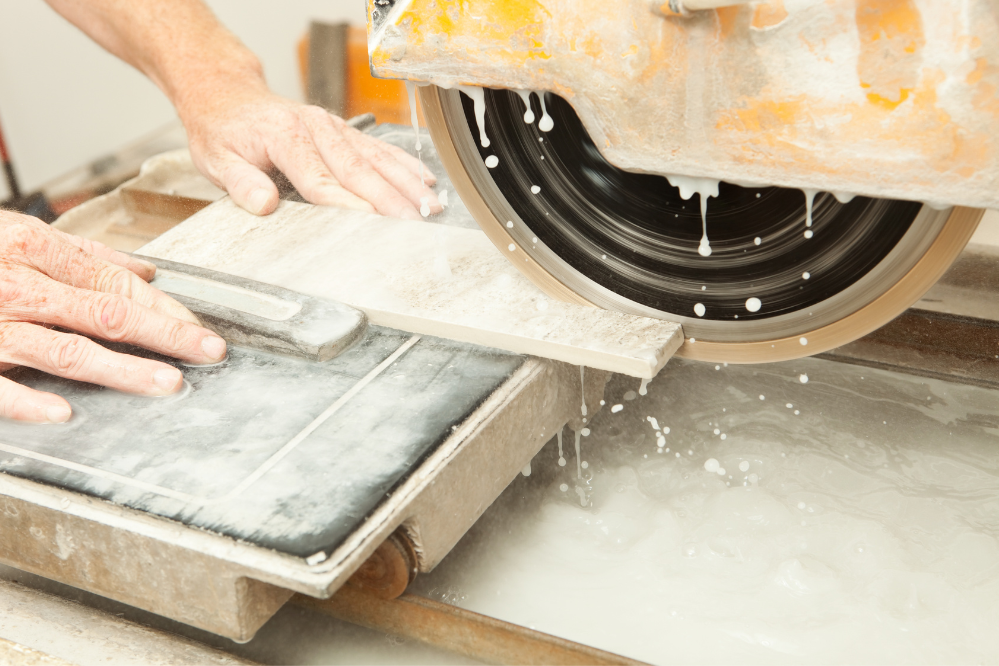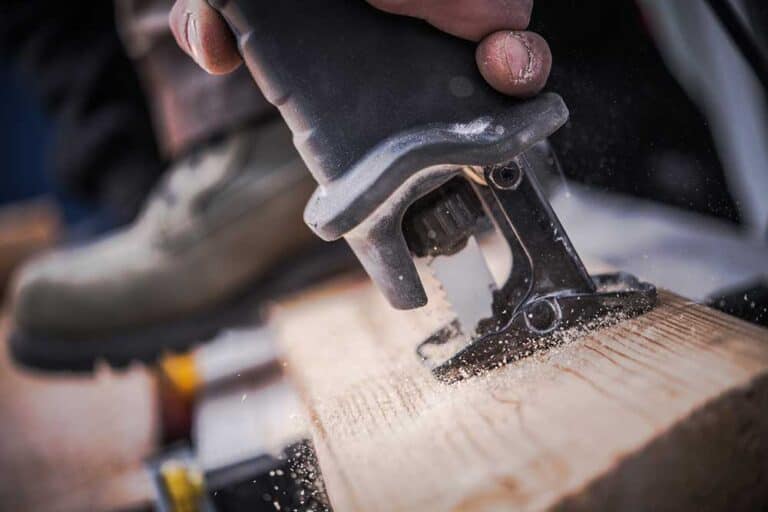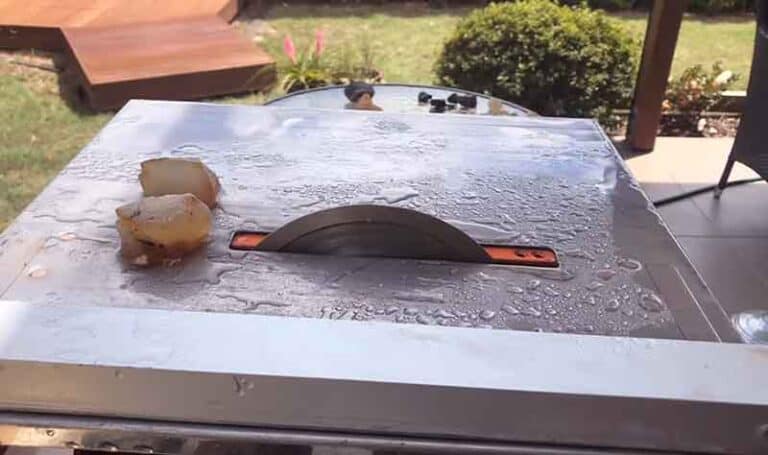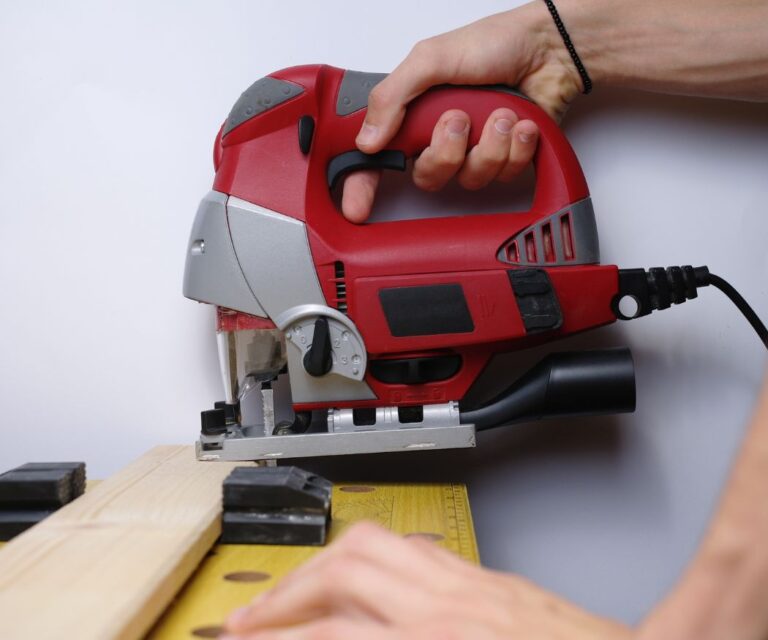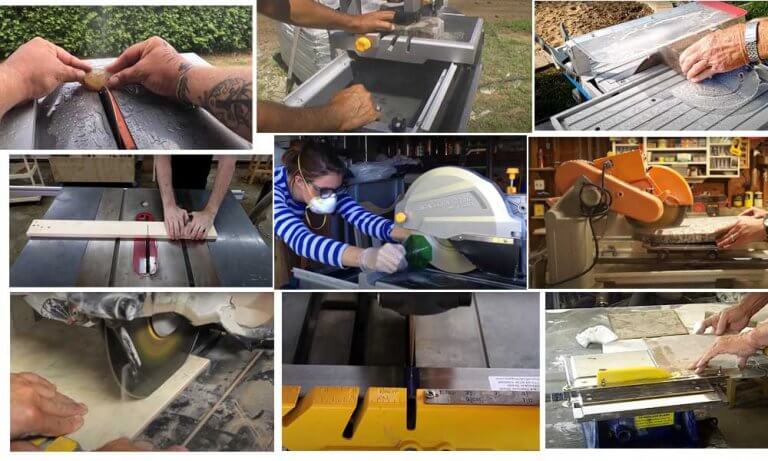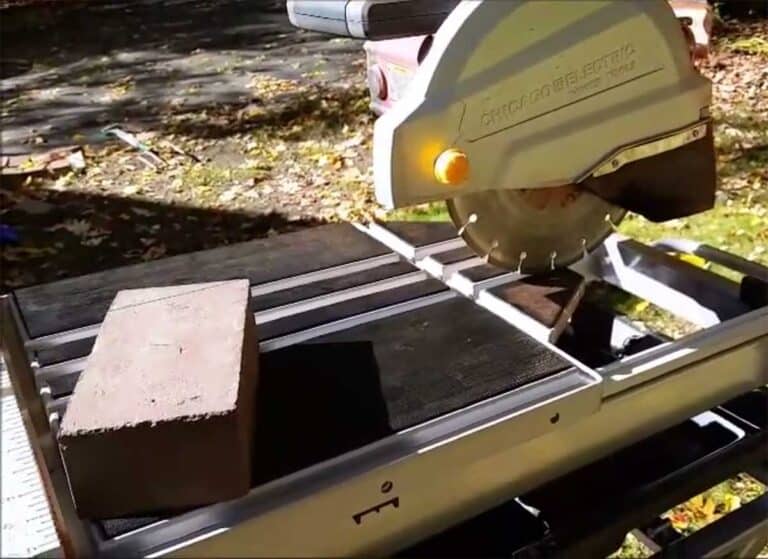How long does Tile saw blade last? – know about all.
As an Amazon Associate I earn from qualifying purchases.
A tile saw blade is a primary element of a tile saw for making accurate and precise cuts on different materials.
Depending on the blade type, quality, speed, and the material being cut with that blade, a tile saw blade can last 12 to 120 hours of cutting life. Within this time, the blade will be getting too worn out and dull to make accurate and precise cuts, and at that time, you should replace it.
Let’s look at the detailed description and other aspects and see How long does tile saw blade last and what to consider, and which factors reduce and prolong the life of a tile saw blade.
Factors that impact the lifespan of a tile saw blade
If you buy a high-quality blade, it can easily run or cut for a minimum of 12 working hours and a maximum of 120 working hours. Still, if you overlook some factors, the working hours can be reduced, which can impact the lifespan of a tile saw blade and can even damage the tile. Those are crucial to look at when selecting and using a tile saw blade.
Blade Selection: Diamond, abrasive, and carbide blades are the most common types of tile saw blades. Among them, the diamond blades are the toughest and most durable as they are made of steel and coated with diamond chips, so if you choose a diamond blade, you will get a longer lifespan than the other types of blades.
Blade quality: It is very much common that a high-quality product will last longer than a low-quality product. The same goes for the tile saw blade; a low and cheap-quality blade is made of low to average-quality material that will wear and tear faster than a high-quality blade and can even chip and break while cutting.
Also, you must know that a high-quality blade costs more but will last longer and perform better. However, the low-quality blades are cheap and, initially, may seem it is saving your money, but the thing is, as they have a lower lifespan and performance for that, you have to buy more blades which ultimately will cost more instead of one high-quality blade.
So, always try to have a better-quality blade for longevity and better cut and performance.
Speed: Speed can also affect the lifespan of a tile saw blade. If you increase the blade rotation speed and cut at a fast speed, it will generate more heat which will wear down the blade faster than at a slow speed.
Also, without applying pressure on the blade, slowing the cutting frequency and speed gives you better cutting quality and longer blade life.
Material selection: Using a selective blade on selective material can extend a blade’s lifespan. Also, false selection can reduce the lifespan. Like diamond blades are best for cutting ceramic, porcelain, glass, and brick; abrasive blades are best for concrete and masonry; carbide blades are best for tile adhesives and stone.
Hard and soft material: Different blades are made to cut different hard or soft materials like ceramic, porcelain, granite, brick, and stone.
If you try to cut a hard material, it will obviously reduce its lifespan faster than you will get while cutting soft materials because cutting on harder material could overheat the blade, which will wear out, dull, and even change the shape of the blade.
Usage time: If you continuously use a tile saw blade for a long period of time, that will wear down the blade quickly and reduce its lifespan on the blade.
How to maintain a tile saw blade for maximum longevity
Obviously, buying a quality blade will last a long, but with some tips, you can have maximum longevity every time.
- First, never use one tile saw blade for cutting every different material because it will shorten the blade’s life. Instead, there are specifically designed blades for cutting different materials such as soft, hard, and abrasive materials; choose that one while cutting to have maximum longevity.
- Secondly, maintain the cutting speed; never try to cut fast to save time; it will damage the blade and won’t provide you with precious cuts. Instead, slide the workpiece slowly towards the blade to give the blade enough time to finish the cut.
- Thirdly, with specific different design blades, there are different blades for wet and dry cutting. For example, the dry-cutting blade can be used for both dry and wet cutting, but you can cut dry cuts with a wet-cutting blade.
Note: To maximize longevity, always try to maintain that with a dry tile cutting blade, only make dry cuts, and with a wet tile cutting blade, only make the wet cut.
- Fourthly, while cutting, the chips or particles of the materials get stuck on the blade and cover the rim, which will dull the blade. For that, after every cut, clean the blade, and after a certain time, sharpen the blade to keep the blade rim and edge clean for smooth cuts and longevity.
- Fifthly, keep your blade in dry places and not in a damp environment so that it doesn’t take moisture which can damage the blade and reduce lifespan.
How to know when to replace a tile saw blade?
If you are a regular worker, you may easily notice the signs while cutting, but for beginners, it’s hard to identify the symptoms without knowing about them. Even sometimes, the pro-workers overlook this, which reduces the cut quality.
- Firstly, notice if your blade is shaking or vibrating while turning on or cutting. If it is, then replace the blade neither getting struck with the material; it could break or lose its shape, which can cause accidents.
Note: This symptom can also happen if you don’t screw your blade tightly, so check if it tightens or not.
- Secondly, notice whether your regular cuts take a long time or cutting is getting tough on your regular materials. If it takes longer, your blade is dull, which makes your cutting speed slower.
- Thirdly, after cutting, if you see chipped cuts, tiny cracks covered through the edge, or breaking of the material you are cutting, then it’s time to replace your blade.
- Fourthly, notice if you are getting unusual sounds while turning on or cutting. The noises indicate that the blade is not rotating smoothly, and while cutting, the blade gets tough to go through the material, which creates noises.
- Fifthly, notice whether you can see the steel core of the blade or the diamond chips attached to the rim have vanished. If you see these replace the blade as soon as to have a smooth and perfect cut.
Frequently Asked Questions
Is a wet or dry tile saw blade better?
In the market, there are wet and dry tile saws, and for them, there is a specific wet or dry tile saw blade which gives the best performance in their sector.
But for versatility and accuracy, a wet cutting is best because while cutting, it uses continuous water flow, and you can make continuous cuts without wearing out and overheating the blade. Even harder materials cutting is easier on it.
How many times can you sharpen a saw blade?
You can sharpen a saw blade maximum of 3 or 4 times to keep it usable for cutting. While cutting chips and particles stuck on the blade rim, keeping it for a long time covers the rim and reduces cut quality.
To keep the perfect flow of cutting, one needs to sharpen the blade to renew the rim, but sharpening more than 3 or 4 times can vanish the line on the blade, which ultimately increases the cut time and reduce cut quality.
Do diamond blades need water?
Yes, diamond blades need water, and it is necessary to use water while cutting so that it doesn’t overheat and wear out, which ultimately increases the blade’s lifespan.
Is there a difference in lifespan between a carbide and a diamond blade?
Yes, there is a difference in lifespan between a carbide and a diamond blade. Depending on cutting different types of materials, a diamond tile saw blade lasts 12 to 120 working hours, whereas a carbide blade last fewer working hours than diamond blades.
Conclusion
Whenever you buy or use a tile saw blade, carefully select the material and the material you are cutting and never try to fast cut; use wet and dry blades only for wet and dry cutting and never cut for a long time; give some break after a while.
This will ultimately prolong the life of a tile saw blade. I hope you got your answer and suggestions. Thank you.

